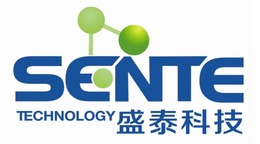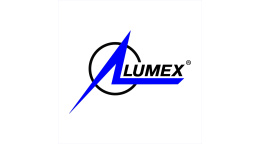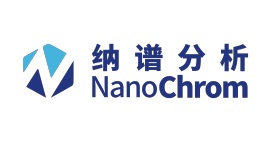方案详情文
智能文字提取功能测试中
玫瑰油蒸馏废水中的原生酵母及其对酚类物质的生物转化能力Indigenous Yeasts from Rose Oil Distillation Wastewater and Their Capacity for Biotransformation of Phenolics使用格哈特公司振荡器Laboshake在180 rpm条件下振荡30分钟using a Laboshake shaker (C. Gerhardt GmbH & Co. KG,Königswinter, Germany) at 180 rpm for 30 minMDPImicroorganisms 2 of 14Microorganisms 2023, 11,201 玫瑰油蒸馏废水中的原生酵母及其对酚类物质的生物转化能力 Article Indigenous Yeasts from Rose Oil Distillation Wastewater andTheir Capacity for Biotransformation of Phenolics Mila Rusanova 1, Krasimir Rusanov 1D, Veronika Butterweck² and Ivan Atanassov 1,* AgroBioInstitute, Agricultural Academy, 1164 Sofia, Bulgaria; milagradeva@abv.bg (M.R.);krusanov@abv.bg (K.R.) 2 Institute for Pharma Technology, School of Life Sciences, University of Applied Sciences and ArtsNorthwestern Switzerland, 4132 Muttenz, Switzerland; veronika.butterweck@zellerag.chCorrespondence: ivan_atanassov@abv.bg; Tel.: +359-882-290241 Abstract: The indigenous yeasts associated with the spontaneous fermentation of phenolic-rich roseoil distillation wastewater (RODW) generated after the industrial distillation of rose oil were studied.The ITS-rDNA sequence analysis of the samples collected from RODW fermented at semi-sterileconditions, a waste deposition lagoon and endophytic yeasts isolated from industrially cultivatedRosa damascena suggests that the spontaneous RODW fermentation is caused by yeasts from thegenus Cyberlindnera found also as endophytes in the rose flowers. Phylogenetic analysis based onthe nucleotide sequences of the translation elongation factor (TEF1α) and 18S- and 26S-rRNA genesfurther confirmed the taxonomic affiliation of the RODW yeast isolates with the genus Cyberlindnera.The RODW fermentation capacity of a selected set of indigenous yeast isolates was studied andcompared with those of common yeast strains. The indigenous yeast isolates demonstrated a superiorgrowth rate, resulting in a nearly double reduction in the phenolic content in the fermented RODW.The indigenous yeasts' fermentation changed the RODW phenolics' composition. The levels ofsome particular phenolic glycosides decreased through the depletion and fermentation of theirsugar moiety. Hence, the relative abundance of the corresponding aglycons and other phenoliccompounds increased. The capacity for the biotransformation of RODW phenolics by indigenousyeasts is discussed. Keywords: rose oil distillation wastewater; indigenous Cyberlindnera yeast fermentation; phenolicsbiotransformation 1.Introduction Academic Editors: Irina Ivshina and Elena A. Tyumina Received: 19 December 2022 Revised: 5 January 2023 Accepted: 9 January 2023 Published: 12 January 2023 Copyright: @ 2023 by the authors.Licensee MDPI, Basel, Switzerland.This article is an open access articledistributed under the terms andconditions of the Creative CommonsAttribution (CC BY) license (https://creativecommons.org/licenses/by/4.0/) Rose oil distilled from the flowers of Rosa damascena Mill. is one of the most valuableessential oils used as a base component in a wide range of high-quality perfumery andcosmetic products [1]. One kilogram of rose oil is produced by the water-steam distillationof about 3000 kg of freshly collected rose flowers. Prior to distillation, rose flowers aremixed with water in a 1:4 ratio (w/v), i.e., the distillation of 1 kg of rose oil requires a total of12,000 L of water. The industrial water-steam distillation lasts about two and a half hours,and the boiled aqueous mixture of rose flower remedies remaining in the distiller tank isquickly discharged at the end of the distillation cycle. Taking into account the volume of theobtained distillate, the production of 1 kg rose oil results in the release of about 7500 L ofliquid waste containing pieces of rose flower remedies. Over 80% of the discharged wasterepresents phenolic-rich rose oil distillation wastewater (RODW). Due to the high contentof phenolics and their slow decomposition by microorganisms, phenolic-rich wastewaters,including RODW, are considered biopollutants. Thus, it is required to minimize theirdischarge into drainage systems and rivers [2,3]. Our previous research showed that RODW phenolics consist mainly of flavonoidsincluding quercetin and kaempferol glycosides, ellagic acid and phenylethyl alcohol gly-cosides [2]. Analysis of the phenolic-enriched resin extract obtained from the RODW In this study, we investigated the yeast and fungal biodiversity relating to the earlyfermentation following the hot RODW discharge from the distillers and isolated indigenousyeasts causing the spontaneous fermentation. The taxonomic affiliation of the isolatedindigenous yeasts and their impact on the fermentation and the RODW’s phenolic compo-sition were studied. The RODW fermentation rate and phenolic biotransformation causedby indigenous yeast isolates and common yeast strains were compared. 2. Materials and Methods 2.1. Sampling of Rose Oil Distillation Wastes Two types of rose oil distillation liquid wastes were collected from a private distilleryin the Rose Valley, Bulgaria, during the 2018 rose oil distillation campaign. The twotypes of wastes were designated as RODW (Rose Oil Distillation Wastewater) and DLRFR(Deposited Liquid Rose Flower Remedies). They correspond to the two types of wasteprocessing practices employed in the industry (more detailed explanations of the wasteprocessing practices are presented in the Discussion part). In short, the RODW sample isrose oil distillation wastewater made when the distillery uses a cooling pool and separatesflower remedies, while the DLRFR sample is rose oil distillation wastewater made whenthe entire waste from the distillers is transferred directly to a lagoon located near thedistillery. RODW samples were collected in a sterile glass bottle directly from the coolingpool immediately after the discharge of the hot liquid wastes from the rose oil distillers.Upon sample collection, a 500-mL glass bottle containing 400 mL of RODW was closedwith a sterile cap and transferred to the lab. The cap was later replaced by a fine sterilenylon mesh under laminar flow, and the RODW was incubated at room temperature insterile conditions for four days without agitation in order to allow the growth of indigenousmicroorganisms. Additionally, RODW from the cooling pool was collected in 1000 mLglass bottles and autoclaved at 121 °C for 20 min, resulting in sterile liquid RODW mediumused for further cultivation experiments. DLRFR samples were collected in 50-mL sterileplastic containers from the waste lagoon located near the distillery. 2.2. Collection of Indigenous Yeast and Mold Isolates from RODW and DLRFR Samples One milliliter portions of DLRFR and RODW samples were used for preparation ofserial dilutions with sterile water. 100 microliters of the diluted samples were plated onsolid RODW medium consisting of RODW and 20 g/L agar, with or without addition of30 mg/L chloramphenicol for selective cultivation of yeasts and molds. The RODW solidmedium was autoclaved at 121 °℃ for 20 min, without pH correction prior to sterilization.The cultures were incubated at 28 °C for 2-4 days in a BD 56 incubator (BINDER GmbH, Germany) until single colonies were obtained. Single colonies were transferred and repeat-edly sub-cultured on fresh RODW, YPD (10 g yeast extract, 20 g peptone, 20 g dextrose,20 g agar, w/v, pH 6.5) and PDA (39 g DifcoTM Potato Dextrose Agar, BD, France, w/v)media for further studies. 2.3. Isolation of Yeast and Mold Rose Flower Endophytes from Flower Buds of R. damascena Mill RFE (Rose Flower Endophytes) yeast and mold were isolated from unopened flowerbuds of R. damascena Mill (as shown in Figure 1) collected at the beginning of the activerose flowering from 11 different plantations in the Rose Valley of Bulgaria, at locationsdescribed by Rusanov et al. [17]. After sterilization with 70% ethanol for 30 s and 0.1%HgCl2 for 7 min, the flower buds were cut and the petals from the internal part of theflower bud were cultivated in Petri dishes with sterile YPD and PDA media. The cultureswere incubated at 25°C in a BD 56 incubator (BINDER GmbH, Germany) and observed forgrowth of microorganisms. Developing microorganisms were promptly transferred andsub-cultured on fresh nutrient media for further studies. Figure 1. Molecular characterization of yeast and mold diversity. A neighbor-joining phylogenetictree constructed from ITS sequences of RODW, DLRFR and RFE isolates and BLAST search identifiedsequences showing high level of homology. The percentage of replicate trees in which the associatedtaxa clustered together in the bootstrap test are shown next to the branches 2.4. Common Yeast Strains Used for Fermentation of RODW In parallel to the indigenous yeast and mold isolates, a set of 24 yeast strains kindlyprovided by the National Bank for Industrial Microorganisms and Cell Cultures (NBIMCC)at the University of Chemical Technology and Metallurgy (UCTM)-Sofia, Bulgaria, wasused to study the RODW fermentation. The strains were Candida zeylanoides ATCC 24745,Cryptococcus flavus ATCC 10656, Cryptococcus laurentii ATCC 10668, Debaryomyces hanseniivar. hansenii ATCC 36239, Geotrichum fermentans ATCC 10675, Pichia angusta ATCC 34438,Pichia anomala ATCC 16763, Pichia bispora ATCC 10627, Pichia carsonii ATCC 24214, Pichiaguilliermondi ATCC 9058, Pichia jadinii ATCC 9256, Pichia trehalophila ATCC 22307, Pleurotuseryngii CCRC 36213, Rhodosporidium toruloides ATCC 15385, Rhodotorula lactosa ATCC 18176,Saccharomyces bayanus DSM 70547, Saccharomyces pastorianus ATCC 12752, Trichosporon mon-tevideense ATCC 90035, Trichosporon cutaneum ATCC 28592, Yarrowia lipolytica ATCC 18942,Zygoascus hellenicus ATCC 15542, Zygosaccharomyces rouxii ATCC 14679, Zygosaccharomycesrouxii DSMZ 7525 and Zygosaccharomyces bisporus ATCC 52405. Each of the yeast strainswas cultivated on YPD and RODW solid media and further used in the studies. 2.5. Molecular Identification of Yeast and Mold Isolates from RODW, DLRFR and RFE Samples The yeast and mold isolates were taxonomically identified using PCR amplificationand direct sequencing of the ITS region of nuclear rRNA genes. The primers used forPCR amplification of the ITS region were ITS1 5'-TCCGTAGGTGAACCTGCGG and ITS45'-TCCTCCGCTTATTGATATGC [18]. The PCR amplification was performed using thefollowing program: 3 min at 95 °℃, followed by 33 cycles of 95 °C for 15 s, 53 °C for 30 s,72 °C for 1 min and final extension at 72 °C for 3 min on a QB-96 thermal cycler (QuantaBiotech Ltd., Surrey, UK). The obtained PCR products were separated in 1.2% agarose gel,purified from the gel using GeneJET Gel Extraction and DNA Cleanup Micro Kit (ThermoScientific, Waltham,MA, USA) and commercially sequenced (Macrogen, Inc., Seoul,Re-public of Korea). The obtained ITS sequences were assembled using Vector NTI 10 (LifeTechnologies, Carlsbad, CA, USA) and used for BLAST search against sequences depositedin GenBank to determine their close relatives and approximate taxonomic affiliations. Theobtained ITS sequences, together with selected pools of GenBank retrieved sequences, weresubjected to phylogenetic analyses using MEGA 4 [19]. The taxonomic affiliation of selected yeast RODW isolates was further studied basedon a phylogenetic analysis of the sequences of their 18S-rRNA, 26S-rRNA and TEF1α generegions. Two primer pairs were used for amplification of the 26S-rRNA region (Pair 1:NL-1F5'-GCATATCAATAAGCGGAGGAAAAG and NL-E27R5-TGACGAGGCATTTGGCTACC;Pair 2: NL-1611F5'-CCGCAGCAGGTCTCCAA and ETS-2AR5'-GATCGTAACAACAAGGCTACTCTA, [20]), with one primer pair for amplification of the TEF1a region (983F 5'-GCYCCYGGHCAYCGTGAYTTYAT and 2218R5-ATGACACCR ACRGCRACRGTYTG,[21])and one primer pair for amplification of the 18S-rRNA region (NS1 F5'-GTA GTC ATA TGCTTG TCTC and NS8 R5-TCC GCA GGT TCA CCT ACG GA, [18]). The PCR amplificationswere performed using the following program: 3 min at 95 °C, followed by 33 cycles of 95°℃for 15 s, 57 °C for 30 s, 72 °C for 1 min 45 s and final extension at 72 °C for 3 min on a QB-96PCR thermal cycler (Quanta Biotech Ltd., UK). The obtained PCR products were separatedin 1% agarose gel, purified from the gel and cloned in the pJET 1.2 plasmid vector using aCloneJet PCR Cloning kit (Thermo Scientific). The cloned 18S-, 26S- and TEF1c fragmentswere commercially sequenced (Macrogen, Inc). The obtained 18S-, 26S-rRNA and TEF1仪sequences were assembled using Vector NTI 10 (Life Technologies) and used for BLASTsearch against sequences deposited in GenBank. The obtained sequences, together withselected pools of GenBank retrieved sequences, were subjected to phylogenetic analysesusing MEGA 4 [19]. 2.6. Fermentation of RODW with Indigenous Yeast Isolates and Common Yeast Strains A single colony from each of the tested indigenous yeast RODW isolates and commonyeast strains was used to initiate overnight cultures by inoculating 5 mL YPD medium and incubating at 28 °℃ and 190 rpm in a Climo-Shaker (Kuhner AG, Birsfelden, Switzerland).One milliliter of each overnight culture diluted to optical density OD580 = 1 was used forinoculation of 100 mL sterile liquid RODW media and incubated at 28°C and 190 rpmin a Climo-Shaker (Kuhner AG, Birsfelden, Switzerland). Cultivation was performed inparallel with a control of sterile liquid RODW media. The growth rate and content of totalphenols and reducing sugars in the cultures were studied through analyses of samplestaken every two hours between 14 and 22, 38 and 46,62 and 70, 86 and 94, and 110 and 136 hof the cultivation. The growth rate was monitored through measurement of the opticaldensity (OD580) of the samples on a Cintra 20 UV-Vis spectrophotometer (GBC-ScientificEquipment Ltd., Braeside, Australia). At the final time point, samples were also takenfor HPLC-UV analysis of phenolic composition. The comparative cultivation of RODWisolates and common yeast strains was performed in the same way using parallel cultures.The OD580 growth rate was monitored in the samples collected at time points 0, 16, 18,20, 22, 24, 40, 42, 44, 48 and 64 h of the cultivation. All experiments were performed intriplicate. Graph plots were generated using Microsoft Excel 2013. 2.7.Phenolics Extraction from RODW Samples 从玫瑰油蒸馏废水中提取酚类物质 Phenolics were extracted from RODW samples using 10 mL PD-10 columns (GEHealthcare, USA) filled with 1 g of SepabeadsM SP207 resin (Mitsubishi Chemical, Tokyo,Japan) purchased from Sigma-Aldrich. Prior to extraction, the resin was activated byaddition of 4 mL of methanol for one hour, washed with ultrapure water, treated with 8 mLof 1M NaOH and washed three times with 10 mL of ultrapure water. Ten milliliters ofeither fermented or unfermented RODW samples were filtered with a 100-um nylon mesh,loaded to the column and mixed using a Laboshake shaker (C. Gerhardt GmbH & Co. KG,Konigswinter, Germany) at 180 rpm for 30 min. The phenolics adsorbed on the resin werecollected after draining the column washed three times with 10 mL ultrapure water andeluted two consecutive times with 2 mL of 95% ethanol. The two eluates were combined,giving a RODW phenolic extract sample for further analysis. 2.8. Analytical Methods 2.8.1. Total Phenolic Content The total phenolic content was determined using the Folin-Ciocalteu method [22],adapted for a microplate reader. Briefly, 10 uL of the sample or standard (gallic acid)were mixed with 790 uL of distilled water and 50 uL of Folin-Ciocalteu's phenolic reagent(Sigma-Aldrich, St. Louis, MO, USA) in 96 Nunc DeepWellTM plate (Sigma-Aldrich) and,after vortexing, were incubated for 5 min at room temperature. Then, 150 microliters of20% Na2CO3 were added, and the samples were vortexed and incubated for 2 h at roomtemperature. Absorbance was measured at 670 nm using an LKB 6060-006 plate reader(LKB Vertriebs GmbH, Vienna, Austria). The results are expressed as gallic acid equivalents(GAE,mg/L). 2.8.2. Reducing Sugar Content The amount of reducing sugars was determined using the DNS method [23] adaptedfor a microplate reader. Briefly, 100 uL of the sample or standard (D-glucose) were mixedwith 100 pL of DNS reagent (7.06 g of dinitrosalicylic acid, 13 g of NaOH, 200 g of Na-Ktartrate, 5 mL of phenol, 5.53 g of sodium sulfite and distilled H2O to a final volume of1 L) in a 96 Nunc DeepWellTM plate (Sigma-Aldrich). After vortexing, the samples wereheated at 94 °C for 15 min in a WNB 45 water bath (Memmert GmbH + Co. KG, Schwabach,Germany) and then quickly placed on ice. One milliliter of ultra-pure water was addedto the cooled samples. Absorbance was measured at 540 nm using an LKB 6060-006 platereader (LKB Vertriebs GmbH, Vienna,Austria). The amount of reducing sugars is expressedas D-glucose equivalents (mg/L). 2.8.3. HPLC/UV Analysis Two milliliters of each RODW extract sample were placed in a 15-mL Falcon tube andevaporated at 40 °C for 6 h using a CentriVap Benchtop Vacuum Concentrator (Labconco,Kansas City, MO,USA) for ethanol removal. The remaining water extract was frozen inliquid nitrogen and lyophilized using an Alpha 1-2 LD Plus freeze dryer (Martin Christ,Osterode am Harz, Germany). The dry RODW extracts were dissolved in 10% aqueousDMSO containing 3 mg/mL TBHQ (Sigma-Aldrich) as an internal standard to a finalconcentration of 1 mg/mL phenolics and filtered through a 0.45-um MS nylon filter(Membrane Solutions). The HPLC analysis of the extracts was carried out on a HitachiElite LaChrom HPLC system consisting of an L-2130 pump and L-2420 UV-Vis detectoroperated by EZ Chrom Elite ver. 3.3.2 SP2 (Agilent Technologies, Santa Clara, CA, USA)and using H2O(A) and acetonitrile (B) as mobile phases, both containing 1% acetic acid.Twenty microliters of each sample were manually injected and analyzed on an InertsilODS-4 (4.6×250 mm, 5 um, GL Sciences) column at room temperature using the followinggradient program: 0 min 10% B, 0-40 min to 46% B, 40-42 min to 100% B, 42-52 min100% B isocratic, 52-54 min to 10% B. UV absorbance was recorded at 254 nm. Thephenolic compounds were identified by comparing their relative retention times withthose of authentic compounds, purified and LC-MS analyzed in a previous study byRusanov et al. [2]. All chromatograms were integrated using the EZ Chrom Elite ver. 3.3.2SP2 (Agilent Technologies) software. The peak areas of the analyzed compounds werenormalized to the area of the internal standard. The changes in the content of individualcompounds following RODW fermentation were evaluated through calculation of therelative change of the content of each compound, expressed as percentage of the amount inthe control sample (RODW extract without yeast inoculation). 2.8.4. Statistical Analysis Hierarchical clustering of yeast strains and compounds based on data for the relativechanges of compounds in the extract following fermentation of RODW compared to acontrol of non-fermented RODW was performed with the help of SPSS Statistics ver. 25(IBM, Armonk, NY, USA) using Euclidean distances as a measure and the nearest neighboralgorithm for building the dendrograms. Analysis of variance (ANOVA) including Tukeypost-hoc test was performed using SPSS Statistics ver. 25 (IBM, USA). 3. Results 3.1. Molecular Characterization of Yeast and Mold Diversity of Rose Oil Distillation Wastes andRose Flower Endophytes A comparative molecular characterization of the yeast and mold diversity relating tothe two types of liquid waste samples from industrial rose oil distillation, as well as theflower endophytes isolated from industrially cultivated R. damascena plants, was carriedS 1SOlout using ITS sequence-based taxonomic identification. The liquid waste samples includeda RODW sample collected immediately after the discharge of the hot liquid wastes fromthe rose oil distillers in the cooling pool and a DLRFR sample collected from the liquid partof the rose oil distillation wastes deposited in a waste lagoon. Two sets of 96 yeast andmold colonies derived from each RODW and DLRFR sample were selected for the study,following the cultivation of serial dilutions of the samples on RODW solid media. The ITSsequence analysis of the yeast and mold isolates derived from these colonies resulted in theidentification of a total of 14 RODW and 19 DLRFR ITS sequences. In a parallel experiment,the in vitro cultivation of petal tissue from 88 unopened flower buds from R. damascenaplants resulted in the identification and collection of only five endophytic yeast and moldisolates. Their ITS sequences were also included in the study, designated as RFE. Theobtained ITS sequences were further used for a BLAST search against sequences depositedin GenBank, and the ITS sequences with a high level of homology and known taxonomicaffiliations were retrieved. All of the ITS sequences were the subject of phylogeneticanalysis. The constructed phylogenetic tree shows three main clusters of ITS sequences (Figure 1). The largest "RODW& DLRFR& RFE" cluster involved all the sequences of theRODW group and part of the sequences from the other two groups. The ITS sequencesincluded in this cluster were closely related to the Cyberlindnera yeast species. The othertwo clusters were less populated and involved ITS sequences from the DLRFR and RFEgroups, as well as the DLRFR group alone. The taxonomic affiliation of RODW isolates with the yeast genus Cyberlindnera wasfurther confirmed through multigene sequence analysis involving sequences of the 18S-rRNA, 26S-rRNA and translation elongation factor 1α (TEF1α) genes. The phylogenetic treewas constructed from the sequences of two indigenous yeast isolates, RODW5 and RODW8,and the sequences identified by the BLAST search showing a high level of homology. Thephylogenetic tree demonstrated a close affiliation of the multigene sequences of the RODWisolates with Cyberlindnera rhodanensis, as well as with a larger cluster involving otherCyberlindnera species (Figure 2). 0.01 Figure 2. Taxonomic affiliation of indigenous yeast RODW isolates. A neighbor-joining phylogenetictree constructed from 18S-rRNA,26S-rRNA and TEF1a sequences of RODW5 and RODW8 isolatesand BLAST search-identified sequences showing a higher level of homology. 3.2. Cultivation of Indigenous Yeast RODW Isolates in RODW Media Twenty-three indigenous RODW yeast isolates, including RODW5 and RODW8, werecultivated in sterile RODW as a culture medium in shake-flask cultures. The dynamics offermentation were studied through the periodic measurement of the growth rate, reducingsugars and the phenolic content for each culture for a period of 136 h post-inoculation,presented in Figure 3. The parallel cultivation of the yeast RODW isolates showed nosignificant differences in the growth rate, sugar fermentation and changes in the totalphenolic content of the cultures. The active growth of yeast isolates in the RODW mediumlasted for about 62-70 h. After that, the cultures entered the stationary phase. About 80%of the reducing sugars available in the RODW were fermented by the yeasts within the first14 h of cultivation, with no significant changes in their content after that. On the contrary,the biotransformation and fermentation of the phenolics was slower and took place within68-70 h after the inoculation. Additionally, the fermentation resulted in a smaller reductionin the phenolic content compared to the sugars. The phenolics decreased to about 60% oftheir initial content at the stationary phase. Figure 3. Fermentation of RODW by indigenous yeast RODW isolates. Mean data for 23 isolates fora period of 136 h. Left ordinate represents the phenolics and reducing sugar content as a percentageof their initial content in RODW prior to fermentation. Right ordinate presents the yeast growth ratethrough optical density (OD580) of the cultures. The RODW fermentations by the tested indigenousRODW isolates were performed in triplicate. Each point is an average ± SD of results from RODWfermentation by 23 different indigenous yeast isolates. 3.3. Cultivation of Indigenous RODW Isolates and Common Yeast Strains in RODW Media Twenty-four common yeast strains derived from the culture collection of NBIMCCwere tested in parallel cultivations for their capacity for RODW fermentation and comparedto the indigenous yeast isolate RODW-5 (Figure 4). Seven of the tested strains did notgrow in RODW for the studied period of 64 h. The remaining 17 strains were clustered inthree groups according to the level and dynamics of their growth rate. The strains fromGroup 1 representing Pichia angusta, P. bispora, P. guillermondi, P. jadinii and Debaryomyceshansenii showed the highest rate of growth among the tested common yeast isolates. Group2, represented by the five strains of Geotrichum fermentans, P. anomala, P. trehalophila, Zygoas-cus hellenicus and Zygosaccharomyces bisporus, showed a moderate level of growth, whileGroup 3, including the seven strains of Rhodosporidium toruloides, Saccharomyces byanus,S. pastorianus, Yarrowia lipolytica, Z. rouxii ATCC 14679, Z. rouxii DSMZ 7525 and Crypto-coccus laurentii, grew at the slowest rate in RODW. However, none of the tested strainsmatched the growth rate of the indigenous isolate RODW-5 (Figure 4). Time [h] Figure 4. Comparative cultivation of common yeast strains and indigenous RODW-5 isolate inRODW media. The growth curves represent the three groups of common yeast strains formed after clustering analysis based on the growth rate of each strain. All RODW fermentations were performedin triplicate. Each"RODW-5" point is an average ± SDs of the results from three independentRODW-5 cultivations. Each "Group 1," "Group 2" and "Group 3" point is an average of the results ofthe RODW fermentations by the tested common yeast strains from the group, as follows. Group 1strains: Pichia angusta, P. bispora, P. guillermondi, P. jadinii and Debaryomyces hansenii; Group 2 strains:Geotrichum fermentans, P. anomala, P. trehalophila,Zygoascus hellenicus and Zygosaccharomyces bisporus;Group 3 strains: Rhodosporidium toruloides, Saccharomyces byanus, S. pastorianus, Yarrowia lipolytica,Z. rouxii and Cryptococcus laurentii. 3.4. RODW Phenolic Biotransformation after Fermentation by Indigenous Rodw Yeast Isolates andCommon Yeast Strains The biotransformation of RODW phenolics after fermentation with the studied in-digenous yeast isolates was evaluated through the extraction of phenolics from the culturemedia obtained after the parallel RODW fermentations with individual RODW yeastisolates described in part 3.2 above. Following the extraction of the phenolics throughadsorption on microporous resin, the composition of the obtained phenolic extracts fromthe RODW cultures were HPLC-UV analyzed and compared with the phenolic compo-sition of the extract from unfermented RODW. The obtained data showed no significantdifferences in the phenolic composition among the extracts obtained after the fermenta-tion of RODW with the tested indigenous RODW yeast isolates. On the other hand, thefermentation with RODW yeast isolates caused significant changes in the abundance ofpart of the phenolic compounds, as presented in Table 1 (column RODW-5) and Supple-mentary Figure S1a. The obtained data for the relative changes in the phenolic compoundsin the extract following fermentation by RODW-5 were subjected to further clusteringanalysis. The constructed dendrogram shown in Supplementary Figure S2 grouped theanalyzed compounds into three main clusters with similar patterns of changes followingRODW fermentation by the indigenous RODW-5 isolate. The first cluster included five com-pounds that decreased in abundance following fermentation. Three of them, isoquercitrin,kaempferol-3-O-rhamnoside and multiflorin A, were completely assimilated, whereasthe abundance of the other two compounds, ellagic acid and astragalin, decreased about6 times and 3.4 times, respectively. On the contrary, the concentrations of kaempferol andkaempferol-3-O-arabinoside from the second cluster increased, respectively, with a 4.7-foldand 5.45-fold relative increase in their content in the fermented RODW. The third clusterwas the most populated, containing compounds with a moderate increase (about 2-fold)in their content, Table 1. Generally, the RODW fermentation by indigenous yeast isolatesresulted in the elevated abundance of two aglycons, quercetin (1.7-fold) and kaempferol(4.7-fold), due to the assimilation of the sugar residue of some of their respective glycosidesduring the yeast fermentation. In the second part of the study, the RODW phenolic biotransformation capacity ofcommon yeast strains was evaluated through the HPLC-UV analysis of extracts fromRODW culture media after fermentation with three yeast strains (P. angusta, P. bisporaand P. guillermondi,) from Group 1 and three yeast strains (G. fermentans, P. anomala andZ. hellenicus) from Group 2, as described in part 3.3. The composition of the phenolicextracts from the RODW fermented by all six strains is presented in Table 1, and an HPLCchromatogram of the G. fermentans extract, are shown in Supplementary Figure S1b. Therewere significant differences in the composition of the obtained phenolic extracts involvingchanges in the abundance of particular phenolic compounds without the formation ofnew ones after the RODW fermentations of all the tested strains, as shown in Table 1 andSupplementary Figure S1b. The changes in the RODW phenolic composition after thefermentation by Pichia bispora included a higher number of compounds and an extendedrange of changes in the compound abundance in comparison to the other common yeaststrains. This was confirmed by the dendrogram constructed via hierarchical clustering ofthe yeast strains based on the relative changes in the abundance of phenolics, as shownin Supplementary Figure S3. The dendrogram demonstrates the closer clustering of fiveof the tested common yeast strains, the distant location of the Pichia bispora strain and an intermediate position of the RODW-5 isolate. Similarly to the fermentation by theRODW-5 isolate, the abundance of the aglycons kaempferol and quercetin increased from1.55- to 11.82-fold and from 1.4- to 6.3-fold, respectively, for all the tested strains. However,no particular compounds were completely assimilated, in contrast to the fermentationwith the RODW-5 isolate. This suggests that the studied indigenous Cyberlindnera yeastisolate is better adapted to the fermentation of phenolic-rich RODW wastewater. Similarlyto the RODW fermentation by indigenous yeast isolates, the RODW fermentation bycommon yeast strains resulted in changes in the relative abundance of part of the phenoliccompounds, but not in the biosynthesis of new compounds. Table 1. Relative amounts of 15 identified compounds in RODW phenolic extracts obtained afterRODW fermentation with RODW-5 isolate and common industrial yeast strains. The relative amountsare presented as percentages of the amount of each compound in unfermented RODW analyzed inparallel. Each value is an average ± SD of the results from three independent RODW cultivationsfollowed by phenolic extraction and HPLC analysis Pichia Pichia Geotrichum Pichia Zygoascus Ne Compound RODW-5 angusta ATCC 34438 Pichia bispora ATCC 10627 guilliermondi ATCC 9058 fermentans ATCC 10675 anomala ATCC 16763 hellenicus ATCC 15542 1 2 3 Elagic acid 29±3ab 102±26a 81±8ab 93±8a 39±5a 92±13 abc 81±36 abc Hyperoside 237±31d 131±17ab 149±11 ab 130±10a 150 ± 33 bcd 104±12 abc 99 ±27 abcd lsoquercitrin 0±0a 127±16ab 5±1a 117±9a 86±25 ab 95±10 abc 99 ± 32 abcd Kaempferol-3-O-rutinoside 225±29d 133±18 ab 155±7 abc 135±10 ab 171±19cd 108± 12 abc 122±21 bcd Kaempferol 3-O-galactoside 269±35d 145±26ab 171±8abc 140±9ab 177±19 cd 106±12 abc 130±23cd 6 Quercetin-O-methyl disaccharide 211±32cd 115±8ab 79±4ab 128±9a 121±8abc 132±12c 30±5a 7 Astragalin (kaempferol 17±3a 130±16ab 29±9ab 109±8a 136±13bc 101±10 abc 119±19 bcd 3-O-glucoside) 8 Quercitrin 264±36d 128±17 ab 184±47bc 146±11ab 175±20cd 98± 12 abc 185±33d 9 Kaempferol-3-O-xyloside 213±29 cd 125±13 ab 67±4ab 134±10 ab 131±10 bc 137±14c 40±6ab 10 Multiflorin B 119±13 bc 135±16ab 157±15 abc 127±9a 173±20cd 103±11abc 122 ±26 bcd 11 Kaempferol-3-O-arabinoside 545±70e 128±15ab 316±24c 139 ±10 ab 231±28d 111±11abc 275±54e 12 Kaempferol-3-O-rhamnoside 0±0a 125±14ab 149±15ab 124±10a 166±20 bcd 61±6ab 112 ±16 abcd 13 Multiflorin A 0±0a 111±16 ab 127±9ab 113±9a 141±15 bc 48±6a 137±23cd 14 Quercetin Kaempferol 174±27 cd 470±62e 144±17ab 155±20b 626±72d 1182±192e 188±21b 406±58c 354±47e 472±66f 124±32 abc 136±70c 116± 10 abcd 135 ± 55cd Mean values sharing the same letter in each column do not differ significantly at p<0.05. 4. Discussion The industrial water-steam distillation of rose oil generates large volumes of wasteand a boiled aqueous mixture of rose flower remedies. Currently, the industry employstwo main practices for processing the generated waste. One of these practices involvesthe discharge of the entire boiled aqueous waste mixture from the distillers into a coolingpool, combined with the separation and removal of the flower remedies and subsequentrelease of the cooled phenolic-rich wastewater into the drainage system and nearby rivers.The whole process takes less than 24 h. Since the distillers are discharged once or severaltimes per 24 h during the rose harvest campaign, the temperature of the aqueous wastein the cooling pool change with repeated cycles, from around 70℃ to 90°C to nearlyambient temperature, before the following release. The second practice involves the directtransfer and deposition of the entire boiled aqueous waste mixture into a lagoon locatednext to the distillation facility. Similarly to the above, the local temperature at the spotwhere the hot waste is poured out into the lagoon changes with repeated cycles, whereasthe temperature of the rest of the lagoon remains ambient. The aqueous part of the waste isrich in flower-derived sugars and phenolics [2]. Our preliminary observations showed thatthis wastewater undergoes spontaneous yeast fermentation, starting soon after its releasefrom the distiller and later resulting in a change of the wastewater color to black. In this study, we carried out the ITS-based taxonomic identification of yeast and moldisolates relating to the spontaneous fermentation of the wastewater derived from bothwaste-processing practices. Therefore, the study involves the analysis of a RODW samplecollected in a sterile bottle from the hot wastewater of the cooling pool, and a DLRFRsample representing the aqueous part of the waste collected at the place of discharge of thewaste in a lagoon. The results from the ITS analysis indicated that the early spontaneous RODW fermentation is dominated by a community of indigenous yeasts of the genusCyberlindnera. The phylogenetic tree of ITS sequences showed that a large part of DLRFRisolates were also yeasts representing Cyberlindnera sp. clustering together with RODWisolates. The rest of the DLRFR isolates were affiliated with other yeast and mold generaand most likely represent the members of yeast and mold communities of the lagoonassociated with the later stages of the long-term fermentation of the deposited rose oildistillation waste. The obtained results suggest a scenario where the early spontaneous fermentationof the wastewater is caused by a community of indigenous yeasts of Cyberlindnera sp.which possess a high capacity for RODW fermentation. These indigenous yeasts per-manently inhabit the environment of the distillation facilities and are well-adapted tothe phenolic-rich wastewater, resulting in the high rate of its spontaneous fermentation.This was supported by the results from the RODW fermentation experiments, where theRODW-5 isolate showed a superior fermentation capacity in comparison to all the othertested common yeast strains. Additionally, the finding that R. damascena flowers harborCyberlindnera sp. endophyte yeasts that clustered together with the RODW isolates providesground to speculate that the indigenous Cyberlindnera yeasts which inhabit the distillationfacilities could originate from rose flower endophytes brought with the rose flowers andadapted to the discharged phenolic-rich wastewater. Similar scenarios of the spontaneousfermentation of plant phenolic-rich products and aqueous mixtures by indigenous yeastswere reported for other plant processing industries as well, such as the spontaneous grapemust fermentation by indigenous yeasts inhabiting the winery and vineyards [12,13,24],and the spontaneous fermentation of cocoa pulp [14], olive mill wastewater [7,10,11], coffeeprocessing wastes [25], tea [26] and others [16]. Further analysis of the phenolic composition of the fermented RODW showed adiverse mode of changes in the abundances of different compounds, varying from the com-plete assimilation of isoquercitrin, kaempferol-3-O-rhamnoside and multiflorin A throughthe reduction of the content of some phenolic compounds to an increase in the relativeabundance of others. Generally, the main changes involved the cleavage and assimilationof the sugar residue of some flavonol glycosides, resulting in the increased abundanceof the aglycons quercetin and kaempferol. The fermentation of RODW with the testedcommon yeast strains had a similar overall effect on the phenolic composition. Contraryto the RODW-5 fermentation, no complete assimilation of particular phenolic compoundswas observed for the tested common yeast strains, suggesting the better adaptation ofthe indigenous Cyberlindnera yeast to the fermentation of the phenolic glycosides presentin RODW. The biotransformation of flavonol glycosides was specific to the sugar residues in-volved. No new phenolic compounds were detected after the fermentation of RODWby the tested indigenous RODW isolates or common yeast strains. In a previous study,we proposed the recovery and valorization of RODW phenolics through their adsorptionon a microporous resin [2]. The results from the present study suggest that spontaneousRODW fermentation by indigenous Cyberlindnera sp. yeasts, relating to a significant de-crease in RODW sugars and phenolics, has to be taken into consideration when designinga large-scale RODW phenolic extraction. At the same time, the specific changes in theRODW phenolic composition following the fermentation could be used for the directional modification of the RODW composition and could be included as a preliminary step toincrease the relative abundance and yield of specific phenolic compounds. Although thetested indigenous Cyberlindnera sp. isolates demonstrated superior fermentation rates of theRODW, the applicability of such fermentation to the remediation of RODW and phenolicremoval prior to its release into the environment remains to be evaluated. 5. Conclusions The phenolic-rich wastewater RODW generated after industrial rose oil distillation un-dergoes spontaneous fermentation by indigenous yeasts from the genus Cyberlindnera. Theindigenous Cyberlindnera yeast isolates show superior (two to seven times higher) RODWfermentation capacity in comparison to all the tested common yeast strains. The fermenta-tion of the RODW by indigenous Cyberlindnera yeasts results in a decrease in the phenoliccontent to around 60% of the initial concentration in the RODW and specific changes in thephenolic composition involving the biotransformation of particular phenolic compounds,mainly relating to the depletion and fermentation of the sugar moiety of the phenolicglycosides and an increase in the abundance of the corresponding aglycons. The resultsindicate that the studied indigenous Cyberlindnera yeast isolates could be further tested forthe development of processes aimed at decreasing the content of phenolics in the RODWprior to its release into the environment or applied to the directional biotransformation ofRODW and other plant phenolics before their extraction and valorization Supplementary Materials: The following supporting information can be downloaded at: https://www.mdpi.com/article/10.3390/microorganisms11010201/s1. Figure S1: HPLC UV chromatogramsof resin extract from RODW obtained after fermentation for a period of 136 h by (a) indigenousyeast isolate RODW-5, (b) common yeast strain Geotrichum fermentans and (c) control RODW withoutfermentation. Peak designation corresponds to the numbering in Table 1. Figure S2: Hierarchicalclustering of the RODW phenolic compounds according to their content changes following fermenta-tion by the RODW-5 isolate. The dendrogram was constructed using the nearest neighbor algorithmand based on data for the relative changes of phenolic compounds in the extract of fermented RODWcompared to a control extract of unfermented RODW, presented in Table 1. Figure S3: Hierarchicalclustering of the RODW-5 isolate and the studied common yeast strains according to the changesin the content of phenolic compounds following RODW fermentation. The dendrogram was con-structed using the nearest neighbor algorithm and based on data for the relative changes in phenoliccompounds in the extract of fermented RODW compared to a control extract of unfermented RODW,presented in Table 1. Author Contributions: Conceptualization, I.A.; methodology, M.R., K.R. and I.A.; software, M.R.,K.R. and I.A.; validation, K.R., V.B. and I.A.; formal analysis, K.R., V.B. and I.A.; investigation,M.R. and K.R.; resources, K.R. and I.A.; data curation, M.R.,K.R. and I.A.; writing-original draftpreparation, M.R. and I.A.; writing-review and editing, K.R. and V.B.; visualization, M.R.,K.R. andI.A.; supervision, I.A.; project administration, I.A.; funding acquisition, I.A. All authors have readand agreed to the published version of the manuscript. Funding: This work was supported by grant BG05M2OP001-1.002-0012 from Operational ProgramScience and Education for Smart Growth 2014-2020 of Bulgaria, co-financed by the European Unionthrough the European Structural and Investment Funds, as well as by grant IZEBZ0_143110/1 fromthe Swiss National Science Foundation. Data Availability Statement: All obtained sequences were submitted to GenBank with the followingaccession numbers: RODW sequences, ITS (KU216396-KU216406,KU216435,KU216438), 18S-rDNA(KU216431,KU216436),26S-rDNA (KU216432, KU216433), TEF1a (KU216434,KU216437);DLRFRsequences, ITS (KU216412-KU216429); RFE sequences, ITS (KU216407-KU216411). Acknowledgments: The authors would like to thank Rumyana Velcheva (technician at ABI) forexcellent technical assistance. Conflicts of Interest: The authors declare no conflict of interest. The funders had no role in the designof the study; in the collection, analyses, or interpretation of data; in the writing of the manuscript; orin the decision to publish the results. References 1 Kovacheva, N.; Rusanov, K.; Atanassov, I. Industrial cultivation of oil bearing rose and rose oil production in Bulgaria during 21stcentury, directions and challenges. Biotechnol. Biotechnol. Equip. 2010, 24, 1793-1798. [CrossRef] 2. Rusanov, K.; Garo, E.; Rusanova, M.; Fertig, O.; Hamburger, M.; Atanassov, I.; Butterweck, V. Recovery of polyphenols from roseoil distillation wastewater using adsorption resins-A pilot study. Planta Med. 2014,80,1657-1664.[CrossRef][PubMed] 3. Slavov, A.; Vasileva, I.; Stefanov, L.; Stoyanova, A. Valorization of wastes from the rose oil industry. Rev. Environ. Sci. Bio/Technol.2017,16,309-325.[CrossRef] 4 Ilieva, Y.; Dimitrova,L.;Georgieva, A.; Vilhelmova-Ilieva, N.;Zaharieva,M.M.; Kokanova-Nedialkova,Z.;Dobreva, A.; Nedialkov,P.; Kussovski, V.;Kroumov, A.D. In Vitro Study of the Biological Potential of Wastewater Obtained after the Distillation of FourBulgarian Oil-Bearing Roses. Plants 2022, 11,1073.[CrossRef] 5. Solimine, J.; Garo, E.; Wedler, J.; Rusanov, K.; Fertig, O.; Hamburger, M.; Atanassov, I.; Butterweck, V. Tyrosinase inhibitoryconstituents from a polyphenol enriched fraction of rose oil distillation wastewater. Fitoterapia 2016,108,13-19.[CrossRef] 6. Wedler, J.;Rusanov, K.; Atanassov, I.; Butterweck, V. A polyphenol-enriched fraction of rose oil distillation wastewater inhibitscell proliferation, migration and TNF-a-induced VEGF secretion in human immortalized keratinocytes. Planta Med. 2016,82,1000-1008.[CrossRef| 7. Amaral, C.; Anjos, R.; Pais, C.; Musculo, A. Bioremediation of olive mill wastewaters with fungi. Terr. Aquat. Environ. Toxicol.2010,4,45-56. 8. Hamimed, S.; Landoulsi, A.; Chatti, A. The bright side of olive mill wastewater: Valuables bioproducts after bioremediation. Int.J. Environ. Sci. Technol. 2021, 18,4053-4074.[CrossRef] 9. Hladnik, L.; Vicente, F.A.; Grilc, M.; Likozar, B. B-Carotene production and extraction: A case study of olive mill wastewaterbioremediation by Rhodotorula glutinis with simultaneous carotenoid production. Biomass Convers. Biorefin. 2022, 1-9. [CrossRef] 10. Iwissat, S.; Rahil, M.; Shahin, N.; Abuamsha, R.;Hilal, H.S.;Zyoud, A.; Nassar, I.; Voogt, W.; Kujawa, K.;Salman, M. Fungus-basedbioremediation of olive mill wastewater and potential use in horticulture. Water Environ. J. 2022,36,380-386.[CrossRef] 11. Martinez-Gallardo, M.R.; Lopez, M.J; Lopez-Gonzalez,J.A.;Jurado,M.M.; Suarez-Estrella, F.; Perez-Murcia, M.D.; Saez,J.A.; Moral, R.; Moreno,J. Microbial communities of the olive mill wastewater sludge stored in evaporation ponds: The resource forsustainable bioremediation. J. Environ. Manag. 2021,279,111810. [CrossRef] [PubMed] 12. Di Maio, S.; Polizzotto, G.; Di Gangi, E.; Foresta, G.; Genna, G.; Verzera, A.; Scacco, A.; Amore, G.; Oliva, D. Biodiversity ofindigenous Saccharomyces populations from old wineries of south-eastern Sicily (Italy): Preservation and economic potential.PLoS ONE 2012,7,e30428. [CrossRef] 13. McCarthy, G.C.; Morgan, S.C.; Martiniuk, J.T.; Newman, B.L.; McCann, S.E.; Measday, V.;Durall,D.M. An indigenous Saccha-romyces uvarum population with high genetic diversity dominates uninoculated Chardonnay fermentations at a Canadian winery.PLoS ONE 2021, 16, e0225615. [CrossRef] [PubMed] 14. Meersman, E.; Steensels, J.; Mathawan, M.; Wittocx, P.-J.; Saels, V.; Struyf, N.; Bernaert, H.; Vrancken, G.; Verstrepen, K.J. Detailedanalysis of the microbial population in Malaysian spontaneous cocoa pulp fermentations reveals a core and variable microbiota.PLoS ONE 2013,8,e81559. [CrossRef] Nardi, T. Microbial resources as a tool for enhancing sustainability in winemaking. Microorganisms 2020, 8, 507. [CrossRef]15. Steensels,J.; Verstrepen, K.J. Taming wild yeast: Potential of conventional and nonconventional yeasts in industrial fermentations.Annu. Rev. Microbiol.2014,68,61-80. [CrossRef] 17. Rusanov, K.; Kovacheva, N.; Rusanova, M.; Atanassov, I. Low variability of flower volatiles of Rosa damascena Mill. plants fromrose plantations along the Rose Valley, Bulgaria. Ind. Crops Prod. 2012,37,6-10. [CrossRef] 18. White, T.J.; Bruns, T.; Lee, S.; Taylor, J. Amplification and direct sequencing of fungal ribosomal RNA genes for phylogenetics.PCR Protoc. Guide Methods Appl. 1990,18,315-322. 19. Tamura, K.; Dudley, J.; Nei, M.; Kumar, S. MEGA4: Molecular evolutionary genetics analysis (MEGA) software version 4.0. Mol.Biol. Evol. 2007,24,1596-1599. [CrossRef 20. Kurtzman, C.P.; Robnett, C.J. Phylogenetic relationships among yeasts of the 'Saccharomyces complex’ determined from multigenesequence analyses. FEMS Yeast Res. 2003, 3, 417-432. [CrossRef] 21. Rehner, S.A.; Buckley, E. A Beauveria phylogeny inferred from nuclear ITS and EF1-a sequences: Evidence for cryptic diversifica-tion and links to Cordyceps teleomorphs. Mycologia 2005,97,84-98. [CrossRef] [PubMed] 22. Singleton, V.L.; Orthofer, R.; Lamuela-Raventos,R.M. [14] Analysis of total phenols and other oxidation substrates and antioxi-dants by means of folin-ciocalteu reagent. In Methods in Enzymology; Elsevier: Amsterdam, The Netherlands, 1999; Volume 299,pp. 152-178. Miller, G.L. Use of dinitrosalicylic acid reagent for determination of reducing sugar. Anal. Chem. 1959, 31, 426-428. [CrossRef]23. Bougreau, M.; Ascencio, K.; Bugarel, M.; Nightingale, K.; Loneragan, G. Yeast species isolated from Texas High Plains vineyardsand dynamics during spontaneous fermentations of Tempranillo grapes. PLoS ONE 2019, 14, e0216246.[CrossRef] [PubMed] 25. Montoya, A.C.V.; da Silva Mazareli, R.C.; Delforno, T.P.; Centurion, V.B.; Sakamoto, I.K.; de Oliveira, V.M.; Silva, E.L.; Varesche,M.B.A. Hydrogen, alcohols and volatile fatty acids from the co-digestion of coffee waste (coffee pulp, husk, and processingwastewater) by applying autochthonous microorganisms. Int. J. Hydrog. Energy 2019,44,21434-21450.[CrossRef] 26. Li, Q.;Huang, J; Li, Y.; Zhang, Y.; Luo, Y.; Chen, Y; Lin, H.; Wang, K.; Liu, Z. Fungal community succession and major componentschange during manufacturing process of Fu brick tea. Sci. Rep. 2017,7,6947.[CrossRef][PubMed 27. Chuengcharoenphanich, N.; Watsuntorn, W.; Qi, W.; Wang, Z.; Hu, Y.; Chulalaksananukul, W. The potential of biodieselproduction from grasses in Thailand through consolidated bioprocessing using a cellulolytic oleaginous yeast, Cyberlindnerarhodanensis CU-CV7. Energy 2023,263,125759.[CrossRef] 28. Danouche, M.; Ferioun, M.; Bahafid, W.; El Ghachtouli, N. Mycoremediation of azo dyes using Cyberlindnera fabianii yeast strain:Application of designs of experiments for decolorization optimization. Water Environ. Res. 2021, 93,1402-1416. [CrossRef] 29. Kanpiengjai, A.; Chui-Chai, N.; Chaikaew, S.; Khanongnuch, C. Distribution of tannin-'tolerant yeasts isolated from Miang, atraditional fermented tea leaf (Camellia sinensis var. assamica) in northern Thailand. Int. J. Food Microbiol. 2016, 238,121-131.[CrossRefl 30. Murali, D.; Dhandayuthapani, K. Optimization of fermentation of ulva sp. hydrolysate BY novel yeast Cyberlindnera jadinii MMS7for enhancement of polyphenol content and antioxidant activity. J. Drug Deliv. Ther. 2019,9,1-7. 31. Rodriguez Madrera, R.; Pando Bedrifana, R.; Suarez Valles, B. Evaluation of indigenous non-Saccharomyces cider yeasts for use inbrewing. Eur. Food Res. Technol. 2021,247,819-828.[CrossRef] 32. Shi, Q.; Tang, X.; Liu, B.Q.; Liu, W.H.; Li, H.; Luo, Y.Y. Correlation between microbial communities and key odourants infermented capsicum inoculated with Pediococcus pentosaceus and Cyberlindnera rhodanensis. J. Sci. Food Agric. 2022. [CrossRef][PubMed] 33. Song,Z.; Song, L.; Shao, Y.; Tan, L. Degradation and detoxification of azo dyes by a salt-tolerant yeast Cyberlindnera samutprakar-nensis S4 under high-salt conditions. World J. Microbiol. Biotechnol. 2018, 34,131. [CrossRef] [PubMed] 34. Zhang, X.; Zhang, L.; Zhou, T.; Zhou, Y. Fungal flora and mycotoxin contamination in tea: Current status, detection methods anddietary risk assessment-A comprehensive review. Trends Food Sci. Technol. 2022,127,207-220. [CrossRef] Disclaimer/Publisher's Note: The statements, opinions and data contained in all publications are solely those of the individualauthor(s) and contributor(s) and not of MDPI and/or the editor(s). MDPI and/or the editor(s) disclaim responsibility for any injury topeople or property resulting from any ideas, methods, instructions or products referred to in the content.
关闭-
1/14
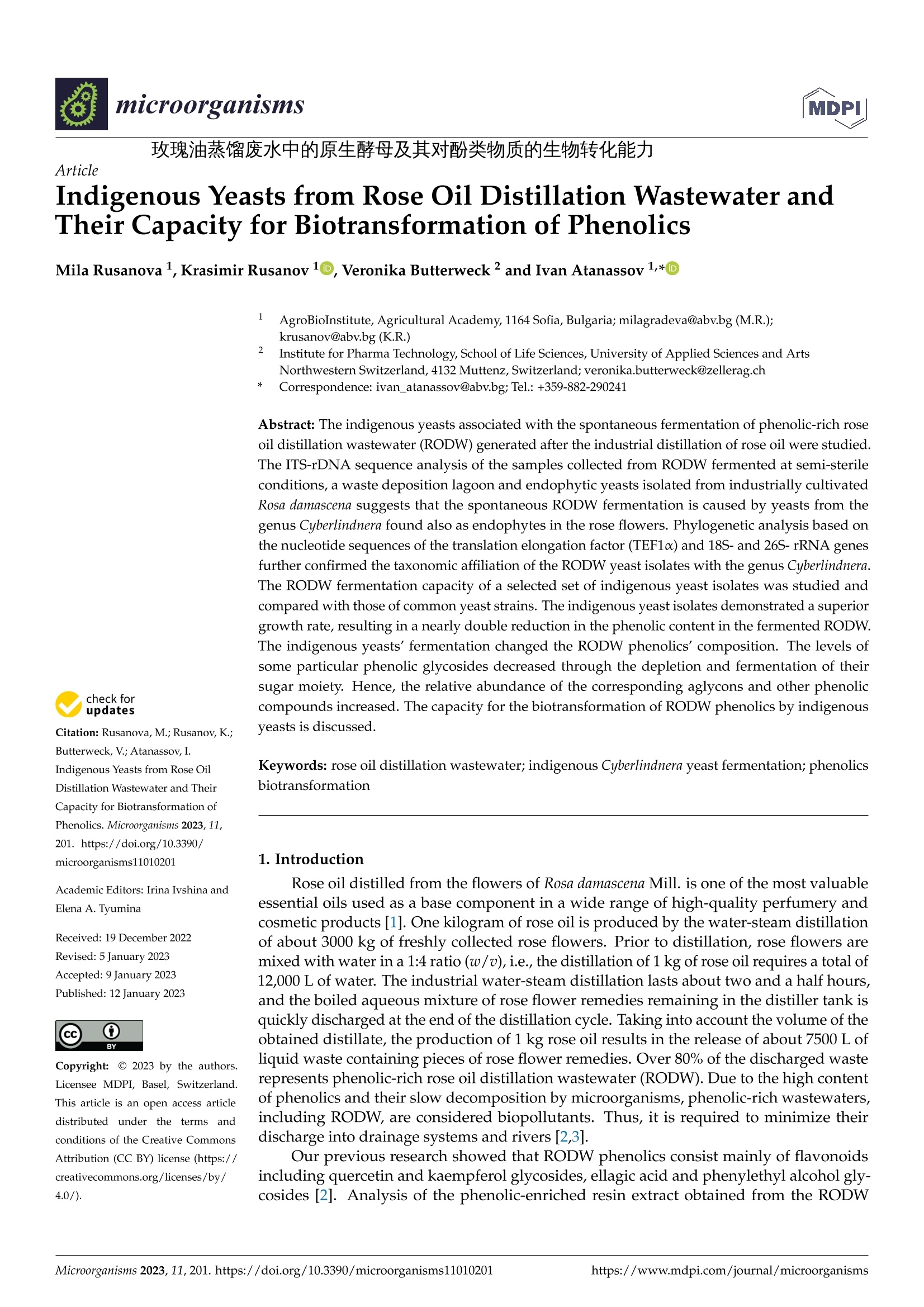
-
2/14
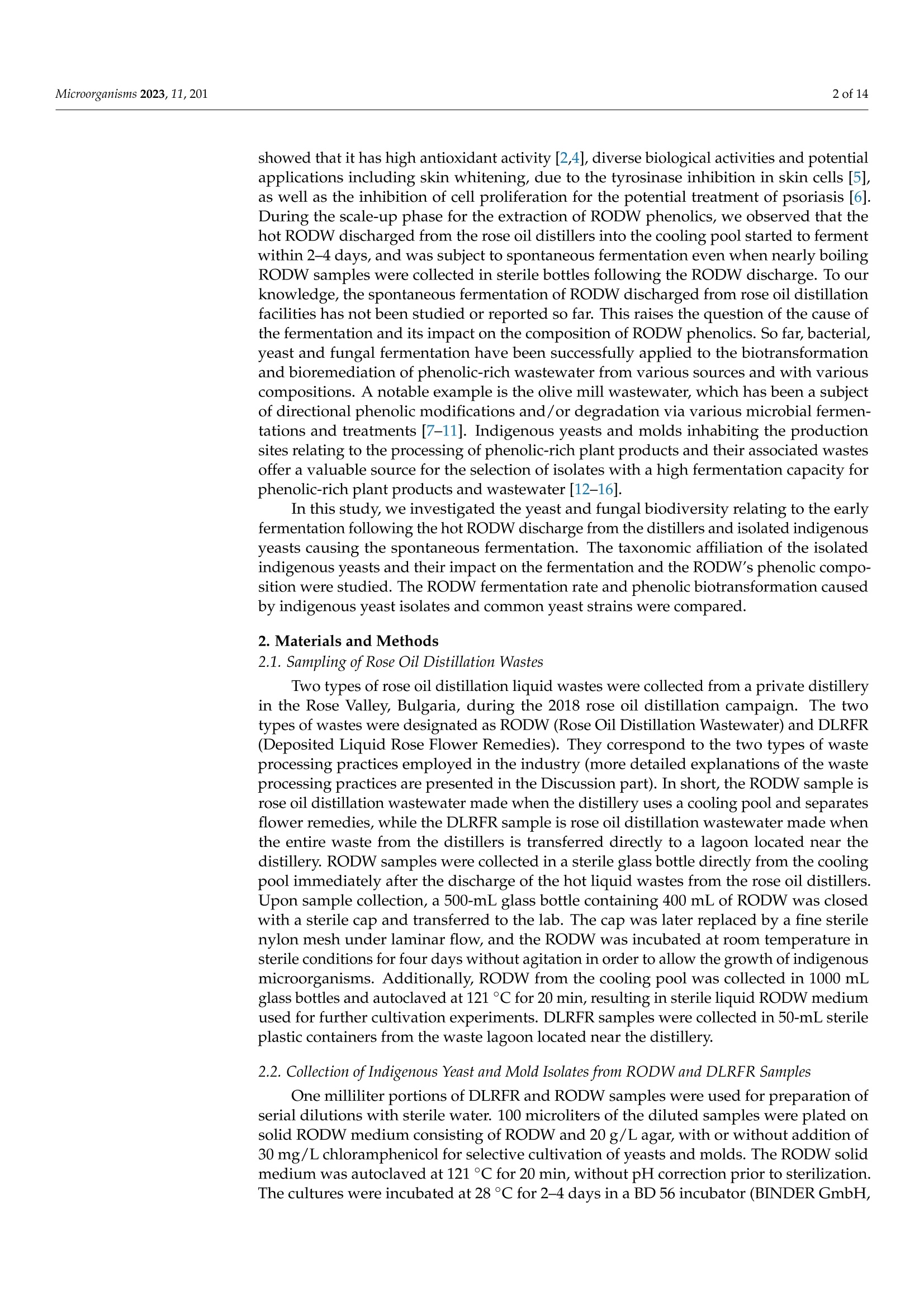
还剩12页未读,是否继续阅读?
继续免费阅读全文产品配置单
中国格哈特为您提供《玫瑰油蒸馏废水中的酚类物质检测的样品振荡》,该方案主要用于废水中有机污染物检测,参考标准《暂无》,《玫瑰油蒸馏废水中的酚类物质检测的样品振荡》用到的仪器有格哈特强力高重现振荡器LS500/RO500、德国加液器MM。
我要纠错
推荐专场
相关方案


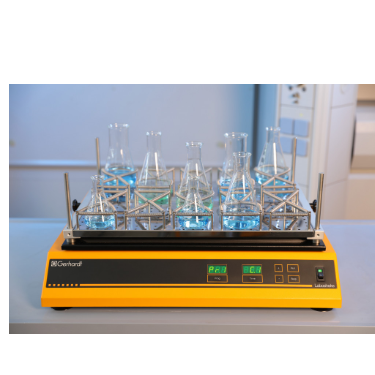
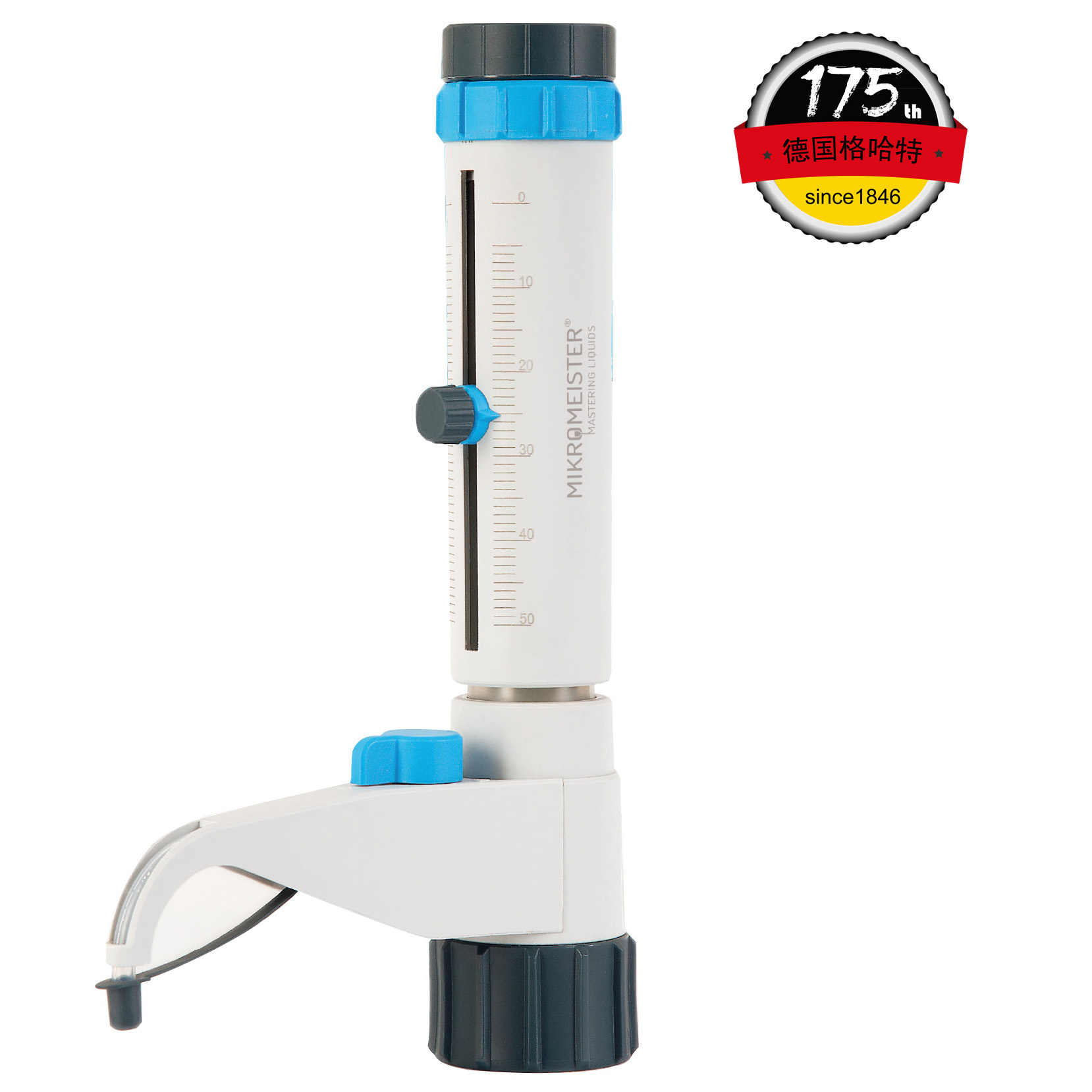
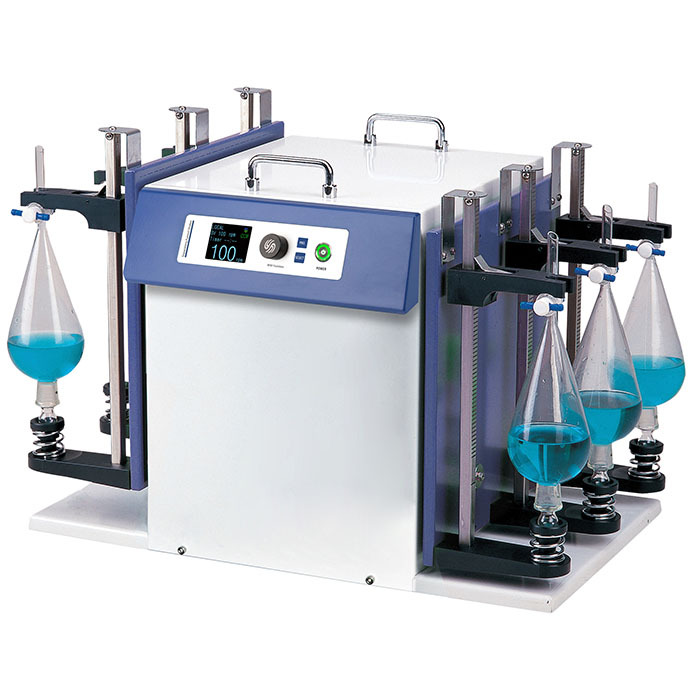
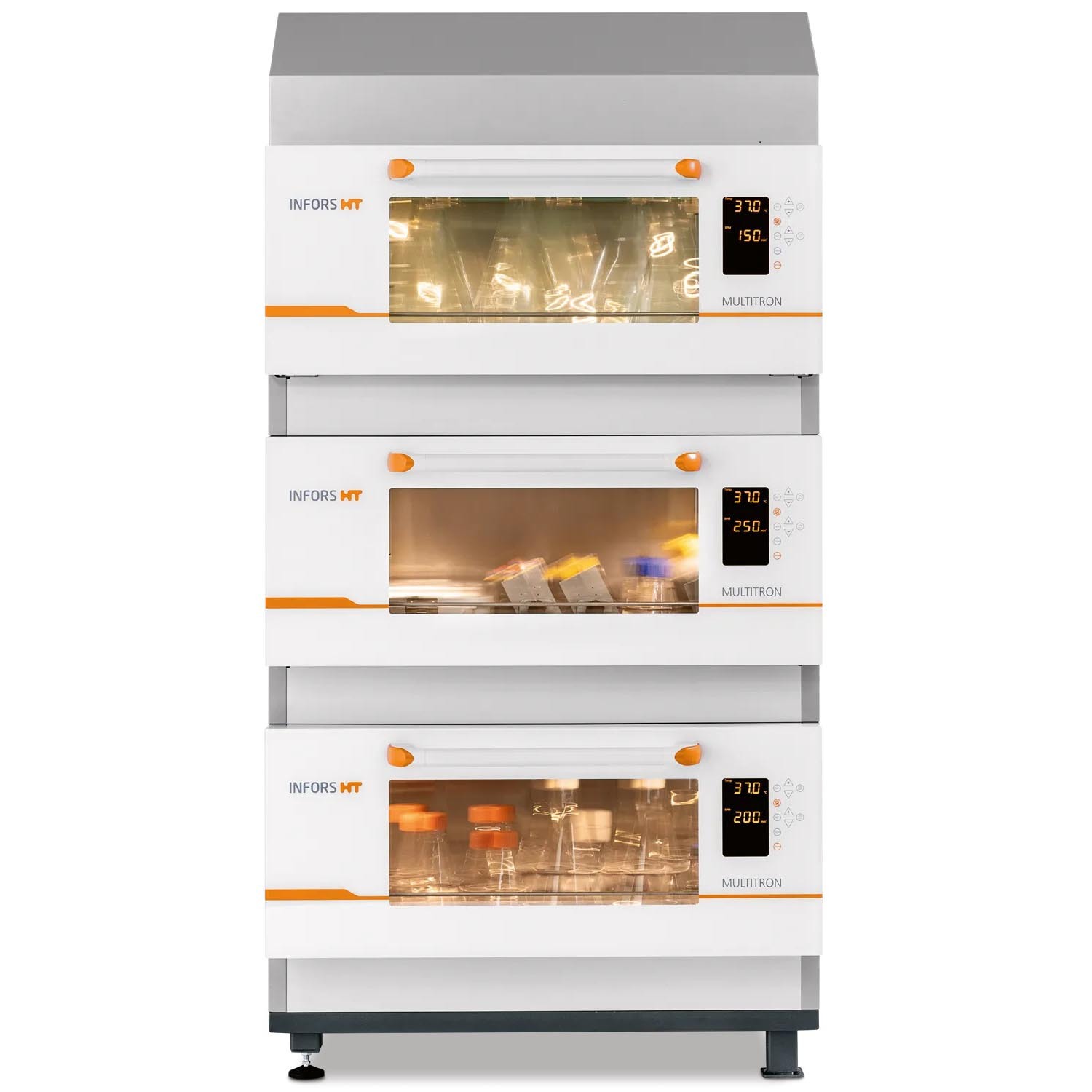
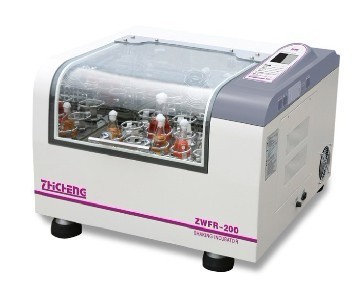



 咨询
咨询